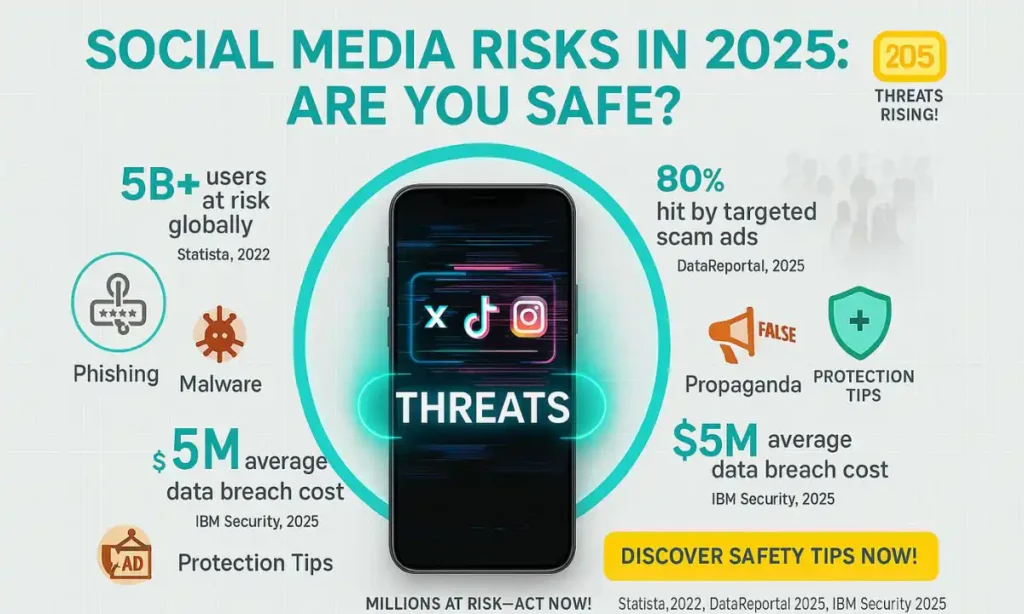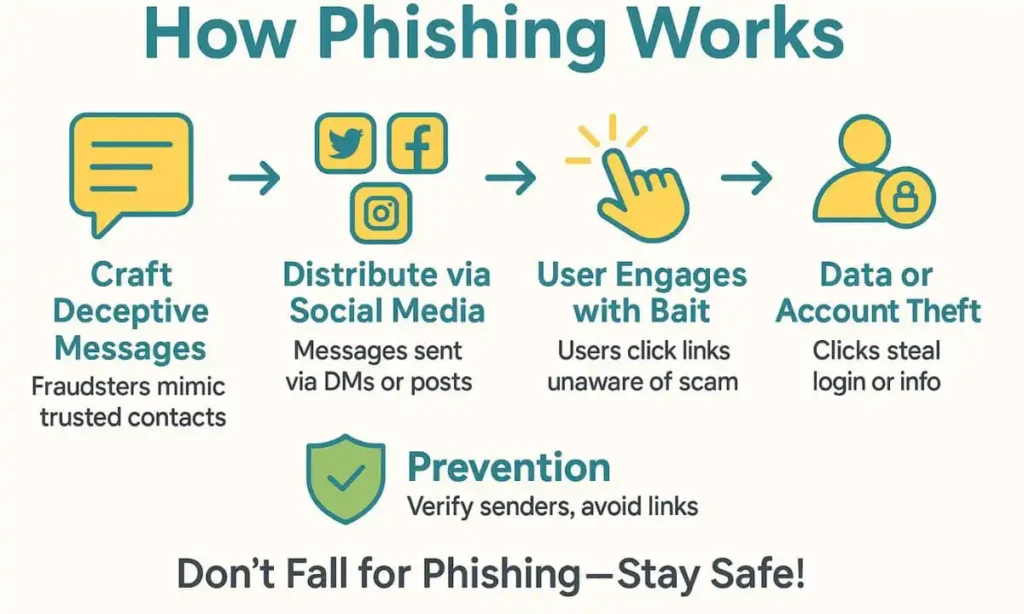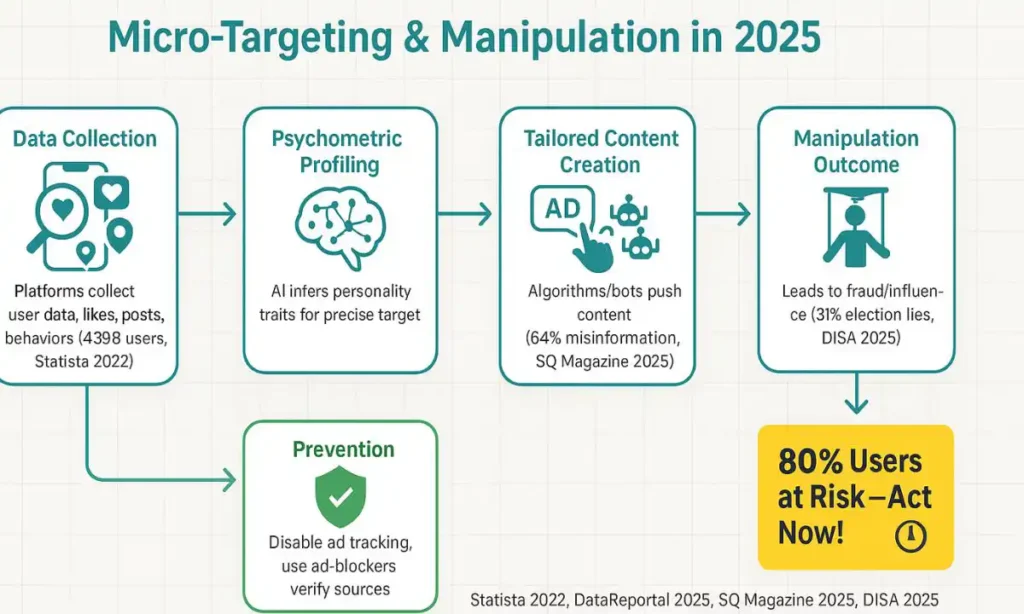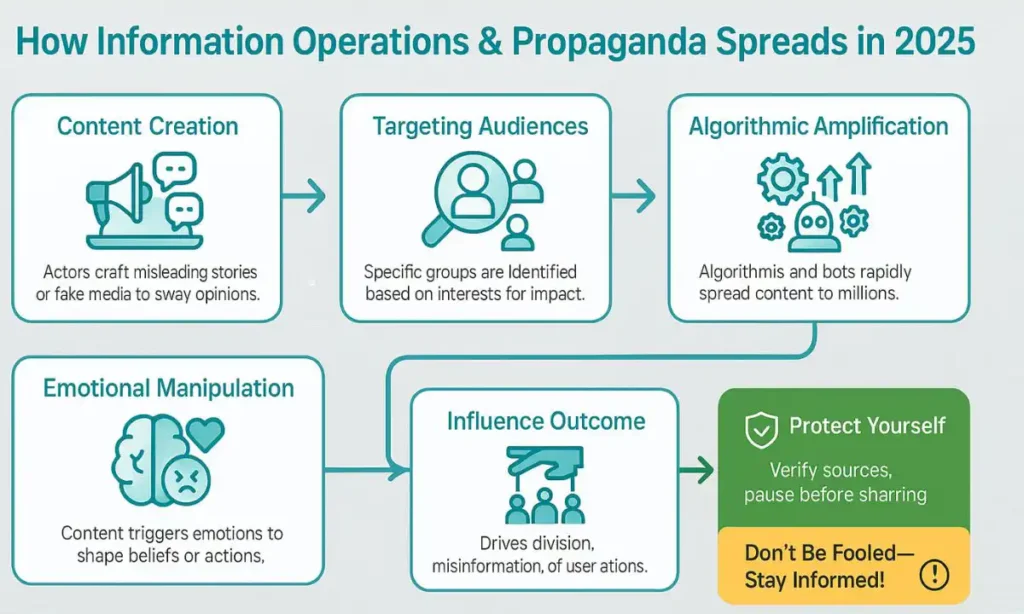10 Alarming Social Media Risks in 2025 You’re Ignoring: Understanding and Combating Them Before It’s Too Late

Just like the majority of the young generation, I spent a big deal of my time on social media, talking to people, making new friends, sharing ideas, and growing my income streams. But then, something felt odd. I have witnessed appealing contacts turn into scammers who set up fake “quick money” schemes. Social Media Risks in 2025 will make people lose millions of dollars daily due to deceptive ventures, dating scams, and unethical vendors on the internet.
Surveys from the FTC reveal that damages from social media scams solely hit $2.7 billion in the current year in the United States. These social media sites also bring up grave problems such as stealing information and monetary damages. I’m posting my research findings with you people on how to identify such red flags beforehand and stay away from them to protect your assets as well as your identity before it’s too late.
Table of Contents
How Social Media Threats Happens
Facebook’s flexibility has made it an advantageous instrument for scammers. Attackers create listings on Facebook Marketplace that trick people into placing an order or disclosing sensitive data. Also, they create tempting fraud campaigns aimed at targeting specific groups of people or occupations using ad-targeting tools. The criminals imitate credible staff members of particular organizations in order to spread illicit links or deceptive offerings. The integrated Meta ecosystem, which comprises WhatsApp, Instagram, and Messenger, is at risk for significant harm from just one corrupted account.
On the other hand, LinkedIn is more susceptible to corporate spying. Hackers create tailored phishing emails by using details like job status and organizational connections from its openly accessible database of company records. These attacks try to retrieve confidential business data or gain entry to protected business networks. These holes tend to be problematic to identify in the platform’s work environment since attackers may fit in with its recognized community.
Social Media Risks in 2025 and How to Stay Safe
Cybercriminals use the fact that social media has become an essential part of people’s lives worldwide in the modern era. Every time a company or individual implements a preventive measure, their strategies are also improved. As a consequence, we must be more careful than ever. Let’s look at social media dangers to identify and deal with the growing social media risks in 2025, such as affiliate scams, data breaches, cyberbullying, lifejacking, and more.
1. Phishing
Phishing is one of the most common social media threats and is done by sending fake messages, posts, or sometimes ads on social media by cybercriminals. They use such tactics to make people reveal their sensitive information, like credit card or bank details, or sometimes even passwords. With the advancement of technology, particularly AI, scammers are also utilizing AI algorithms to make their scams or attacking operations look so real that you may think it’s from a close friend or directly from your bank. So, it’s better not to reveal even your minor details without recognizing the phone number or email address that exactly matches your bank service.
Sometimes these bogus messages or emails may contain a malicious link; for example, you may receive a message from your close friend, and a link to a website is attached that can provide full access to your device to the attackers, and they may use your data for their benefit. According to a report, Phishing attacks have increased by 94% since 2020, and 2.2 million fraudulent websites have been detected in August.
Prevention Tips:
- Try to use AI-powered social listening tools to detect these rising trends of phishing attacks early, such as a sudden spike in messages or emails mimicking trusted individuals or brands. Also, try using AI-powered predictive analytics to identify and block the threats before the damage is done
- In order to lessen the risks, run a social media-specific red team test, in which ethical hackers imitate AI-powered phishing attacks to uncover hidden vulnerabilities.
- Try using decoy social media accounts to make scammers uncover their tactics in order to secure your personal social media accounts.

2. Micro-Targeting and Manipulation
Micro-targeting and manipulation happen when the attackers use your info, like likes, comments, and location, to make personalized ads and trick you into buying stuff and deceive you into believing their lies, making you disclose your sensitive info. These social media threats are getting more precise with the use of AI, making more personal ads. For example, you are commenting on or liking, or posting some stuff on social media about your interests, and a fake ad might appear in your feed, ending up at a malicious site.
This social media threat could be used as a propaganda to psychologically target the individuals in order to influence their social media activities. A report show 80% of social media users become the target of Micro-targeting and manipulation and 60% of them click the links at least once.
Prevention tips
- take a look on your social media account settings and turn off ad tracking to stop apps from gathering data about your interests.
- Be cautious about the ads that seem too personal to your interests.
- Use browser tools like ad blockers to reduce these targeted scams to refrain yourself from these hardly detectable social media threats.

3. Catfishing
Catfishing involves creating fake social media accounts to fool people into romance scams to steal money from them. At first, the scammer may build a trust relationship with you and then trick you into losing money. In 2025, it will become very easy for scammers to create fake videos or to change accents or voices using Deepfake AI. However, this type of threat always leaves individuals with emotional damage and money loss.
Preventive measures:
- Be careful with the individuals who often make excuses for meeting in person and even for video calls.
- Integrate Deepfake detection AI tools with video calls on social media, no matter if the other person is trustworthy.
4. Clickjacking (Likejacking)
Clickjacking is one of the most cunning social media threats that has been widely circulated on social media by hackers. They play this game by placing a hidden like button and tricking people into clicking that button unknowingly. Like, most of the time, they place this button under a post or an ad on social media, and you may click the “more info” button, and suddenly your feed is full of junk.
Preventive Tips:
- Implement AI behavioral tools to identify the suspicious factors.
- Set out DNS filtering to block the sites known for likejacking beforehand.
- Avoid interaction with those magical offers or giveaways.
5. Information Operations and Propaganda
This social media threat involves spreading ambiguous or biased content on social media to shape opinions and influence behaviours or even psychological patterns of the general public. The intruders carry out such activities to achieve their own benefits, sometimes backed by certain demographics or even governments. They use smart tech like AI to create misleading stories to create propaganda, fake videos, or bot-driven content that looks real. A report from the PEW RESEARCH Center shows that 60% of adults in the US reveal that they become targets, and 45% say that these agendas actually influence their personal opinions.
Preventive Tips:
- Use free AI tools like Botometer if any bot-based account is circulating misleading information.
- Cross-check any post with trusted news sites before believing it.
- First, verify every news with sites like PolitiFact or Snopes before sharing it; otherwise, you may become a part of such bogus campaigns.

6. CyberStalking
Cyberstalkers are used to keeping an eye on your social profiles to get as much info about your routines or day-to-day life activities as they can, and obviously, their intentions are not good towards you; they may use your content or social activities to harass or manipulate you for their interest. They may contact you through messages or comments under your posts. This type of stalking leaves their victims in a state of emotional distress, causing them fear or a sense of being looked upon every time. In 2025, this social media threat is getting worse than ever.
Prevention tips:
- Try using AI-based anomaly detection tools to identify unusual stalking behaviour of the followers.
- Be careful about what you share on social media about yourself; even a minor detail about you sometimes proves to be a clue to them.
- If you feel anything suspicious, immediately report it to local authorities.
- Set honeypot profiles to trap stalkers and collect evidence against them to use for legal actions.
7. Affiliate Frauds
The attackers generate money by creating fake affiliate marketing schemes on social media, often using fake traffic, bots, or fake followers. They deceive firms by showing fake conversions or sales. This results in high incentives for the scammers, but the companies involved incur a loss.
Preventive Tips:
- Use predictive analysis to spot engagement abnormalities.
- Implement AI fraud detection tools to analyze traffic and observe bot trends in affiliate links shared on social media.
8. Supply Chain Attacks
Supply chain attackers take advantage of the vulnerabilities found in third-party apps that are connected to social media platforms; they target the user data indirectly. In 2025 social media apps are dependent on external tools for ads and analytics. A corrupted supplier could spread malware and cause the info of millions to be compromised.
Preventive tips:
- Use social listening together with predictive analysis to minimize supply chain risks.
- Conduct AI-driven continuous vendor assessments.
9. Intelligence Collection and Social Engineering
Intelligence Collection and Social Engineering is one of the widely spread social media threat these days, it works by collecting open source data from public profiles or posts, often done state or not state actore to achieve their goals then social engineers manipulate this data to make users reveal their personal info through common tactics like phishing, malware, baiting or ransomware, turning social media into a tool for cybercrime or psychological warfare.
Prevention Tips:
- Control your account data visibility from the privacy settings.
- Be careful of these deceptive behaviours and report them immediately if you observe any suspicious activity.
- Go to accounts security settings and enable 2-factor authentication.
10. AI-Generated Synthetic Identities
AI-generated synthetic identities are entirely cooked-up personas generated through advanced AI concepts. These can be used to impersonate any individual or a completely fake personality, enabling undetectable fraud on social media. Unlike basic impersonation, they can build a long-term profile without getting caught up. These social media risks in 2025 are getting circulated on social media because, with the advancement of AI, it has become very easy for scammers to carry out such activities, as it is nearly impossible to catch them
Preventive tips:
- Ask new online contacts random questions or try to trick them with frustrating questions; fake profiles often give vague answers.
- Be extra cautious with new followers who seem too attractive—check their content for odd patterns, like repeating the same phrases.
- Deploy AI identity verification engines to analyze profile creation patterns.
Conclusion
Social media has become an integral part of our lives now, but with the advancement of technology, specifically AI, the chances of getting scammed have also risen drastically. NOW, we can’t rely only on traditional or basic security solutions like strong passwords or 2FA to overcome the rising social media risks in 2025. If we are doing this, then we may fall prey to these scammers who are upgrading their skills with every advancement in technology. But that doesn’t mean we have to be tech experts to stay safe; rather, we can do this by implementing the simple tips discussed above. Stay updated; keep learning new things to control your online safety and to enjoy social media without fear.
What are most critical social media risks in 2025?
Social media threats include manipulation, phishing, micro-targeting,catphishing or social engineering are getting more convincing with the use of AI in 2025, targeting users personal data to manipulate them.
What is micro-targeting, and why is it dangerous?
micro-targeting is dangerous because it invloves creating ads after collecting the data about personal i nterests about the likes or dislikes of their targets to easily lure the target into their tactics to disclose sensitive info. So, be carefull next time you see deals or ads perfectly aligning with your interest
What are the top phishing tactics on social media this year?
Scammers are using fake giveaways or urgent messages to steal data with phishing upto 80% , every time you receive these calls or messages, first verify the source, or contact the sender directly, you can also verify the links through hover preview, these steps are necessary to nulify these intense social media risks
How do supply chain attacks could be cause of social media threats?
Hackers target the 3rd party apps connected to social media platforms through their vulnerabilities, access the users data indirectly and later use this data into thier fraud campaigns, to manipulate or blackmail the victims.
How to fight against misinformation as a social media threat?
misunfornmation is everywhere in the current time, we should cross-check the source of every news we listen or a post we see on social media through trustworthy sources like PolitiFact or Snopes, folow verified accounts or fact check everything bfore sharing further.
What role do bots play in social media threats for 2025?
Bots have intensified the propaganda by spreading misleading information rapidly, counter this using the free detection tools like Botometer and avoid engagment if something feels off. They may lead you to malicious site and make your device or accounts curropted leading to loss of DATA and sometimes MONEY too.
How does AI intensify social media risks in 2025?
AI have made these threats harder to detect then ever before, attacker use Deepfakes to create ads or targeted scams on indivisuals. reports have shown an 80% surge in the AI-driven scams or fraud campaign. Protect yourself with tools like SNOPES or cross check every thing.
How to prevent cyberbullying on social media?
Cyberbullies use fake social media accounts to manipulate or harass their victims, if you encounter with such accounts reporst and block them, use comments filters and join safe communities or groups on social media to refrain from them.
Are data breaches a major social media threat this year?
Yes, hackers often target integrated apps to stole data to achieve their goals, over 39% of social media accounts are at risk of data breach. Avoid over sharing, use 2FA or strong passwords, try changing your passwords often and update your privacy settings regularly.
How oversharing can heighten social media risks in 2025?
Posting every thing on social media or specially location taging invites cyberstalkers. Try using trusted VPNs or think twice before sharing any thing on social media.







